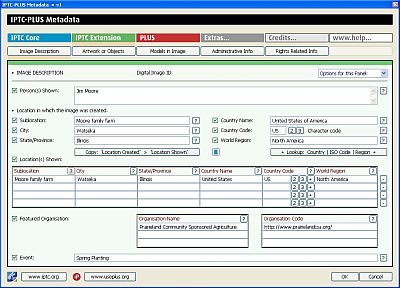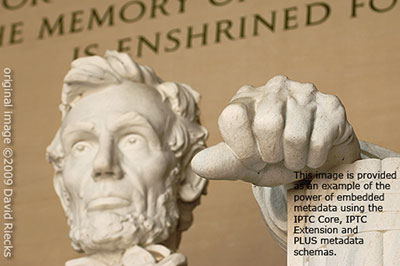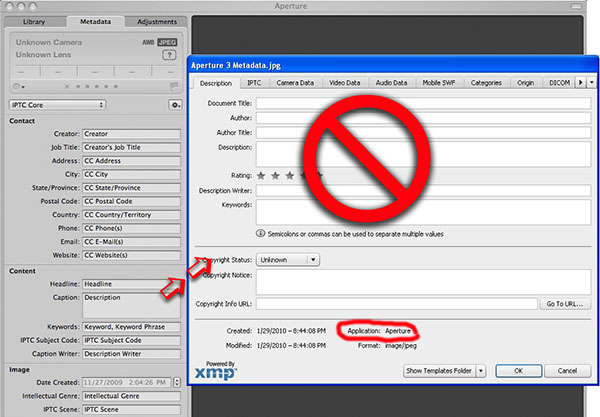
The International Press Telecommunications Council (
IPTC) and the
Picture Licensing Univeral System (PLUS) have jointly developed a plug-in metadata panel for use in Adobe Bridge (CS3 or higher) which allow users to read/write the full set of fields included in the IPTC Core, IPTC Extension and the PLUS metadata schemas.
Metadata are considered as being critical to the photo business as they are used for searching pictures and to indicate the rights and terms of their use. The tools are, as all IPTC and PLUS applications, free of charge and can be downloaded from the IPTC or PLUS websites.
The included tools help photographers, image libraries and photo agencies to store detailed descriptions of their content and data relevant for managing image copyrights directly in the images.
"IPTC was instrumental in the development of the PLUS Standards, and our active collaboration continues today with the release of the IPTC-PLUS Metadata Panels, allowing image creators, distributors and users to benefit from the full scope of image metadata, all from within a single tool," said Jeff Sedlik, President and CEO of the PLUS Coalition.
The release of this free IPTC-PLUS Toolkit means that anyone with compatible versions of Adobe Bridge will now have the means to easily embed the full set of IPTC fields as well PLUS metadata to digital images. Power users will love the fact that with this IPTC-PLUS Metadata panel you can now export out a full set of metadata fields into a Tab Separated Value (TSV) plain text file. In addition, you can modify that data and then import the resulting information through the same Metadata panel so that it is embedded directly into the file.
Also included in the download are comprehensive user guidelines, mapping charts and example images. The user guidelines define each of the fields available in the Adobe CS5 File Info dialogue, as well as those in the IPTC-PLUS Metadata Panels (IPTC Core, IPTC Extension and PLUS Schemas are covered). The field mapping charts will help those that are used to working with other image metadata tools, and the provided images are preloaded with embedded photo metatadata so you can test if the value of a field is shown in the expected field in the user interface.
Read more and download the IPTC-PLUS Toolkit -- the download file is in the olivey-green side bar at the right (a 9.1 mb download).
 There have been a number of recent articles pushing the idea that embedded photo metadata can boost your search engine ranking. However, while the practice of adding embedded metadata to increase findability and to protect the intellectual property of an image are both good ideas, there is a hitch to this concept from the Search Engine Optimization (SEO) perspective.
There have been a number of recent articles pushing the idea that embedded photo metadata can boost your search engine ranking. However, while the practice of adding embedded metadata to increase findability and to protect the intellectual property of an image are both good ideas, there is a hitch to this concept from the Search Engine Optimization (SEO) perspective.







